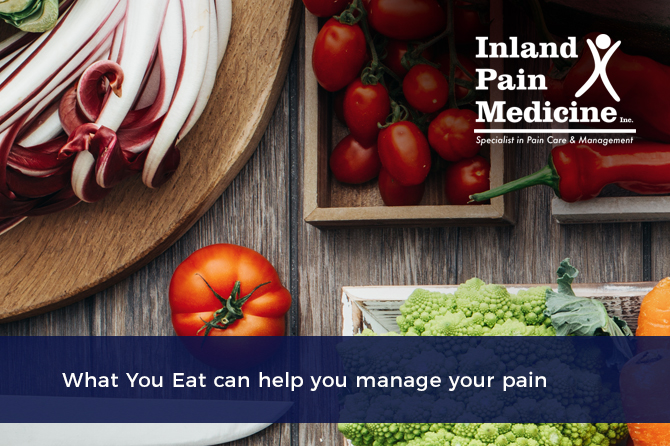
Effectively managing chronic pain requires taking action on several different fronts. Your chronic pain management plan might include medications, physical therapy, psychotherapy, acupuncture, or a combination of strategies. Whatever your path, it likely can be helped with the right approach to eating and nutrition. Here’s what you need to know.
PUFA
You read that right. Polyunsaturated fatty acids (PUFA) can play a role in reducing the body’s inflammatory response, which in turn can ease pain. In a review of the medical literature, researchers concluded that women with chronic pelvic pain (CPP) – with causes ranging from endometriosis to pelvic inflammatory disease – could benefit from consuming more omega-3 fatty acids and fewer omega-6 fatty acids. Americans eat up to 25 times more omega-6s than omega-3s. It’s time to flip that equation.
The best way to balance your intake of omega-3 and omega-6 is to eat fish such as salmon, albacore tuna, and mackerel. Avoid tilapia and catfish, which are high in omega-6. Most nuts and seeds are also high in omega-6 (avoid those), with the exception of walnuts and flaxseeds. It follows that, for cooking, flaxseed oil should be your go-to; other oils have ratios that tip the scale into the omega-6 realm.
Magnesium and Calcium
Magnesium and calcium are the yin and yang of minerals; they need each other in order to achieve balance. Calcium is activated and made available to your body by magnesium. Studies have found that people with chronic fatigue syndrome treated with magnesium felt increased energy and reduced pain compared to those who were not treated with the nutrient.
Dark leafy greens – spinach and chard – are magnesium powerhouses, as are nuts and seeds. But most nuts and seeds work against you because of they’re high in omega-6. Leave it to that superfood – flaxseed – to be both high in magnesium and low in omega-6. Whole grains, legumes, bananas, and avocados also deliver on the magnesium front.
Milk and dairy products have both magnesium and calcium, as do those dark leafy greens – especially kale and turnip greens. Salmon (a great source of omega-3) also shows up in the calcium column; dried beans do double duty as well. Sardines, soymilk, tofu can also be counted on to deliver calcium.
Food Additives
Whenever you veer away from the produce department, you’re likely steering your grocery cart into the Wild West of food additives. Research has linked some food additives to fibromyalgia and other chronic pain conditions. Be on the watch for additives that are considered excitotoxins, which stimulate nerve cells – and not in a good way. Glutamate (found in MSG) and aspartate (used in aspartame) are two additives to avoid.
Garlic
Garlic – known in some circles as the stinking rose and in others as perfume of the gods – confers a number of demonstrated health benefits. Its sulfur compounds can help prevent cardiovascular disease and cancer, lower blood glucose, and battle infectious disease and fungus. There is some evidence that garlic can boost the immune system, which can help lower pain fueled by autoimmune issues.
Spice it Up
Tailoring your cuisine to support your pain management goals is not a sentence for a bland diet. In fact, many spices have anti-inflammatory and immunity-sustaining properties. When you’re ready to add zest to your culinary creations, reach for the turmeric, cinnamon, cayenne pepper, black pepper, or cloves.
Virtually everyone experiencing chronic pain can benefit from incorporating foods that tame the body’s inflammatory response or boost the immune system and avoiding foods that undermine your healing journey.
Leave a reply








Leave a reply